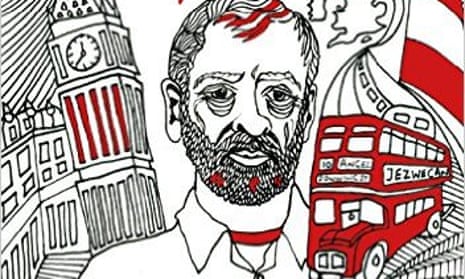After the long, wet winter, the season is finally on the turn. I know this partly because the instinct to hunker down in a nest of books is giving way to an urge to purge. As the weak spring sunshine straggles through the dust motes, it inevitably lands on heaps of unsorted books – among them eight volumes of the Writers’ & Artists’ Yearbook.
I’ve written before about my problems with literary decluttering. But who in their right mind would want to keep eight copies of a directory that barely changes from year to year except for the entries that are out of date? Well – sigh! – me. And here’s why. Many volumes ago, I was asked to write an essay on a literary editor’s life for this sturdy compendium of information for people aspiring to a writing career. While extolling the value of making lists, I wrote that it helped to spot the signs of new publishing trends.
My trend-spotting habit dates back to 1999, when it was all commodity books (powered by the success of Mark Kurlansky’s Cod). In 2002, there was a fad for cute micro-histories with titles almost as long as the text – who today remembers Lord Minimus: The Extraordinary Life of Britain’s Smallest Man?
And so it goes. By 2008, it was all about happiness, with a generical range that took in the historical, the scientific and the philosophical: clearly something more interesting was happening than a dozen books with the same word in the title. By 2012, everything was a biography, as the (yet again) updated essay noted: “We’ve had biographies of food, of cities, of an ocean, the Ordnance Survey map and even cancer.”
The point about trend-spotting is that it helps to find a shape in what can seem like one damned book after another. It’s particularly pleasing when, like the happiness boom, it connects different disciplines and appears to be driven by something more significant than simply publishers out to replicate the last big thing. Happiness led to wellbeing, which in turn led to mindfulness. This says something about social neuroses and efforts to analyse, solve and exploit them. With hindsight, it doesn’t seem coincidental that this strand of thinking and publishing coincided with the financial crash of 2007-8.

And hindsight is what those eight volumes of the Writers’ & Artists’ Yearbook give me. They represent a historiography of my reading life, and the points at which it intersected with the wider culture, long after the books involved have been jettisoned.
It’s been a couple of years since I updated my entry, so I’ve missed out on the nature-writing bonanza (inspired by the success of Robert Macfarlane and his ilk). What’s the betting that in 50 years’ time we’ll look back on these books as a cry of grief for a vanishing environment? I’ve also missed its subgenre, birds, which peaked in 2014 with Helen Macdonald’s Costa-winning H is for Hawk (and had its latest fledgling with David Macdonald Lockhart’s Raptor), though the smart time to have spotted it was in the mid noughties when Mark Cocker and Richard Mabey’s magisterial Birds Britannica came out.
So what trend would I cite, should I be asked for another update? The biggest one at the moment is undoubtedly colouring-in books, which powered a 100% year-on-year sales increase in the “handcrafts, arts and crafts” sector in 2015, a time when all other areas of leisure publishing in the UK showed substantial falls, according to Nielsen Bookscan. We’ve already painted Labour leader Jeremy Corbyn red; now it’s on to David Bowie whose author, Mel Elliott, has previously brought profitable colour to the cheeks of actor Ryan Gosling.
But colouring is so last year. Looking ahead, I’d probably take a punt on the literature of the microverse within us. Biologist Alanna Collen defined this new zone of environmental writing succinctly last year in the title of her book: 10% Human (subtitle: How Your Body’s Microbes Hold the Key to Health and Happiness). Science writer Jon Turney’s I, Superorganism is just out in paperback, and in August Bodley Head will kick off the new publishing season with I Contain Multitudes by the Atlantic journalist and National Geographic Society blogger Ed Jong. It’s a subject ripe for development in all sorts of directions. It can only be a matter of time before we have “Happy Meals for Helicobacter” or, indeed, the neo-modernist fictional masterpiece “Flora, Fauna, Gurgle, Gut”.
Watch this space. Alternatively, let us know of any other publishing trends you have spotted in the comments below.

Comments (…)
Sign in or create your Guardian account to join the discussion